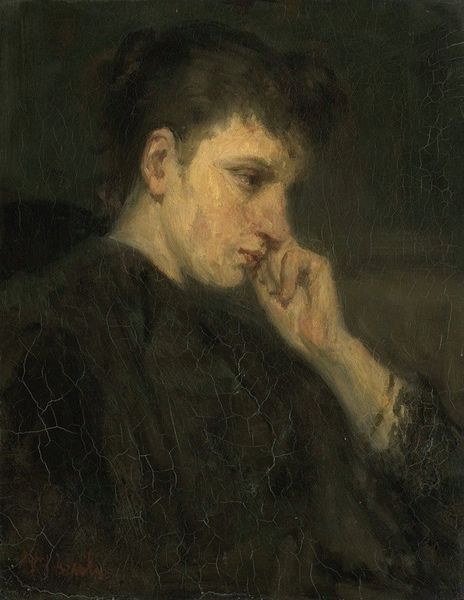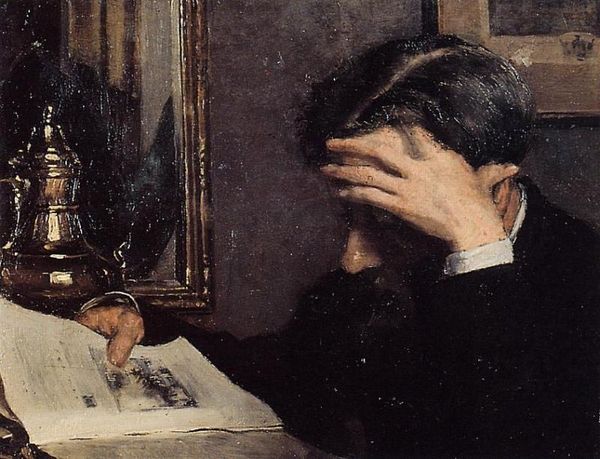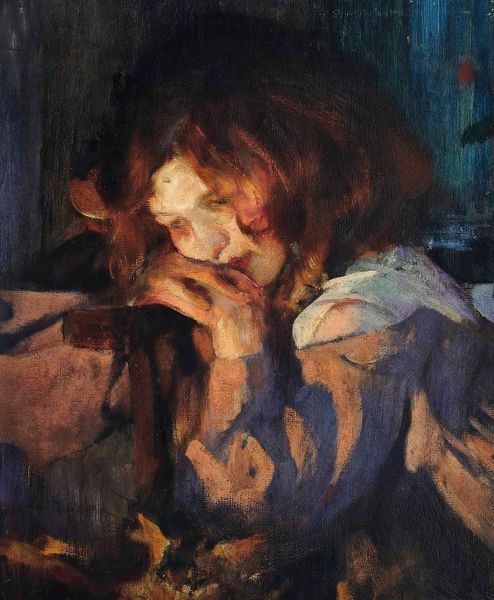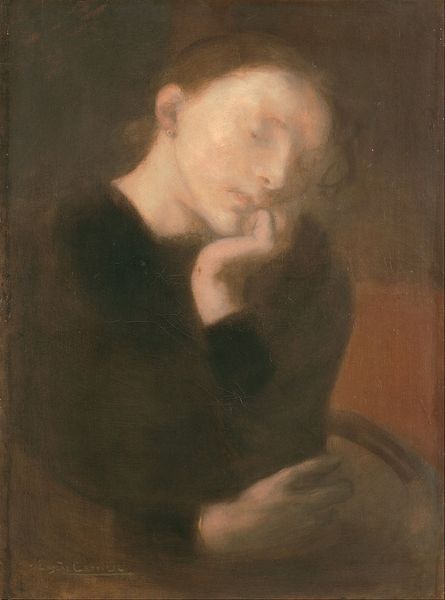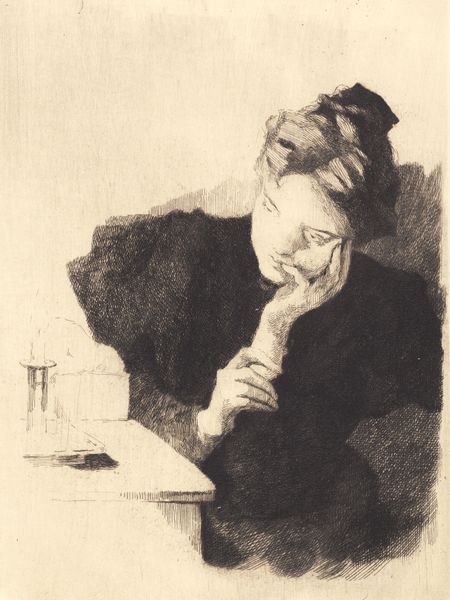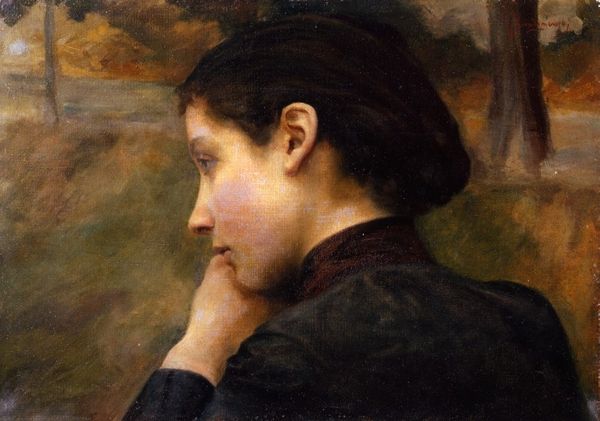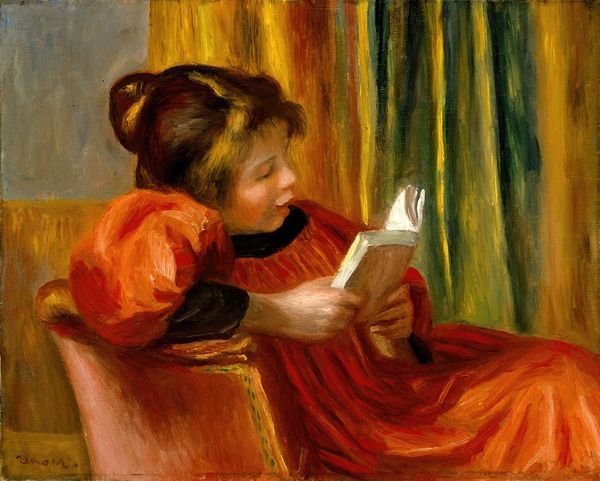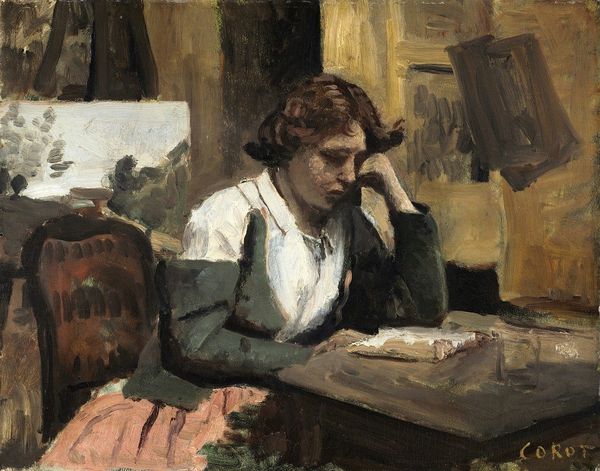
painting, oil-paint, impasto
#
portrait
#
self-portrait
#
painting
#
oil-paint
#
impasto
#
romanticism
#
academic-art
#
self portrait
#
realism
Copyright: Public domain
Editor: Here we have Marie Bashkirtseff's "At a Book", a self-portrait executed in oil paint, with an impasto technique. It feels intensely introspective. I'm struck by the dark background that seems to push the figure forward. How do you interpret this work? Curator: For me, this work raises questions about the very act of artistic production, its materials and labor. Note the texture, the thick application of paint – it calls attention to its constructed nature. It isn't simply a window into the artist's soul. How does the materiality of the oil paint contribute to the sense of "intense introspection" you identified? Editor: Well, the texture, the impasto... It makes it feel less idealized, more grounded, perhaps? Like we're seeing the physical act of creation as much as the inner world. It isn't this kind of art what makes the process visible and tangible? Curator: Exactly. And what of the book? Its pages are blurred, illegible. Consider its social context. As a female artist, Bashkirtseff had limited access to formal training, and limited possibilities for women during that time. Does this work then present also a struggle between intellectuality and a societal-defined role of women? How did Bashkirtseff overcome that barrier by working with new means of production and diffusion for her art? Editor: That’s a compelling point. Perhaps the blurred pages represent restricted access to knowledge. In some way, painting may have provided Bashkirtseff an occupation for something intellectual. Curator: Precisely. Now let us think in how academic art helped Bashkirtseff explore topics more comfortably than with realistic approaches... And, ultimately, it forces us to think about who has access to create and to represent themselves. Editor: That changes how I see it entirely. The materials and even the illegible book are all part of a bigger story. Curator: Yes. Thinking about art's creation shifts our attention from the singular genius of the artist to the broader structures that shape both its making and its meaning.
Comments
No comments
Be the first to comment and join the conversation on the ultimate creative platform.
